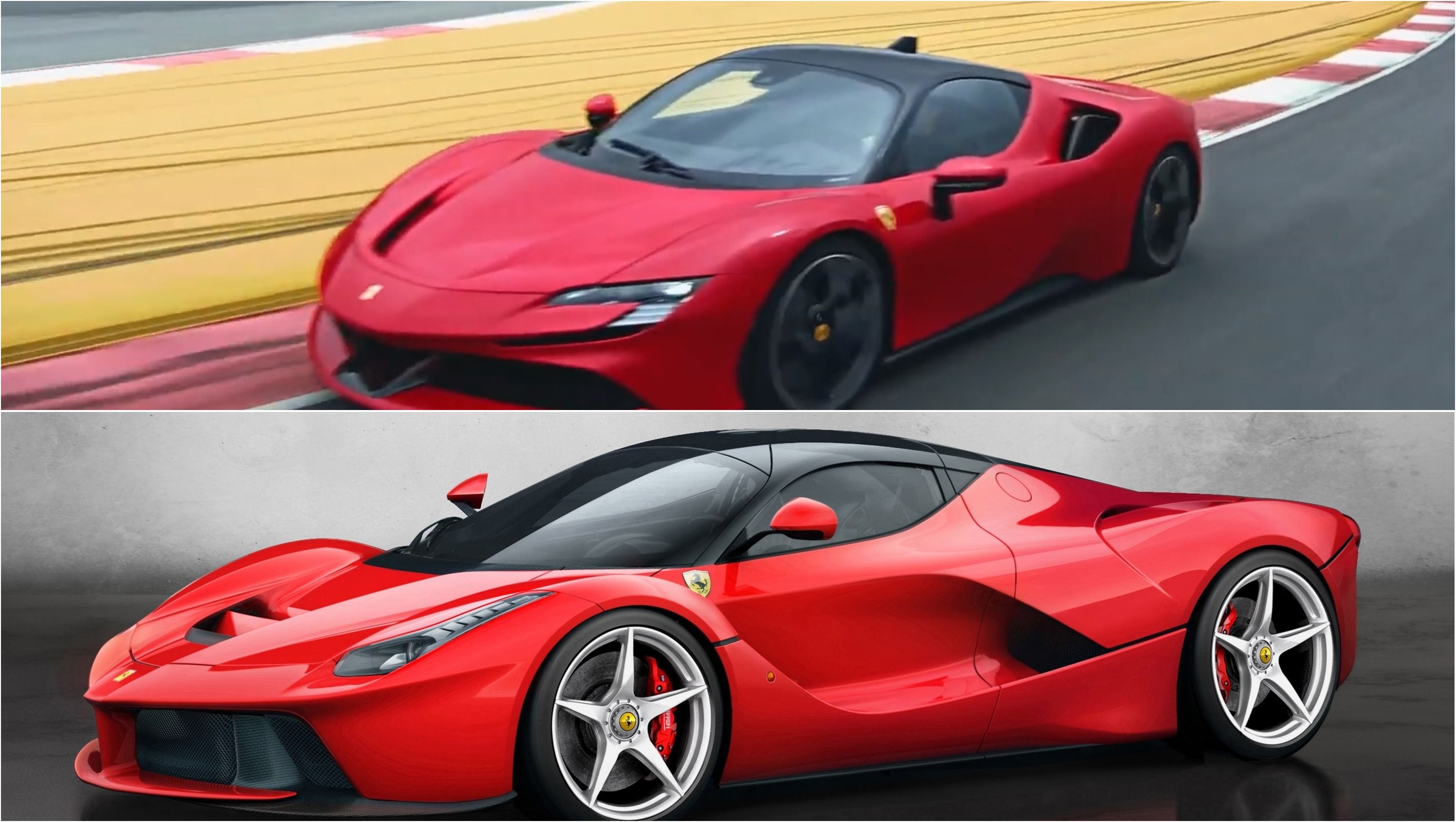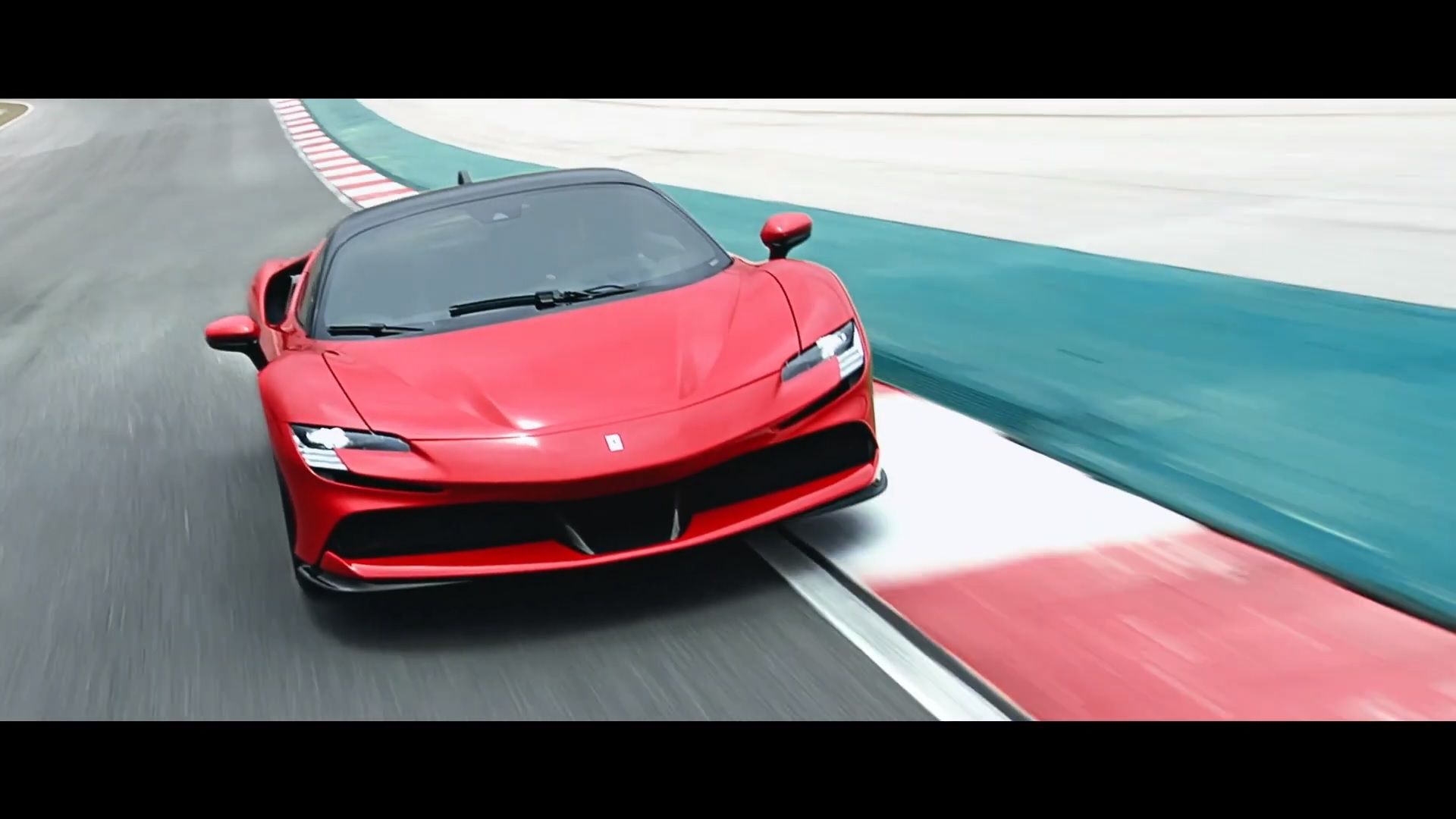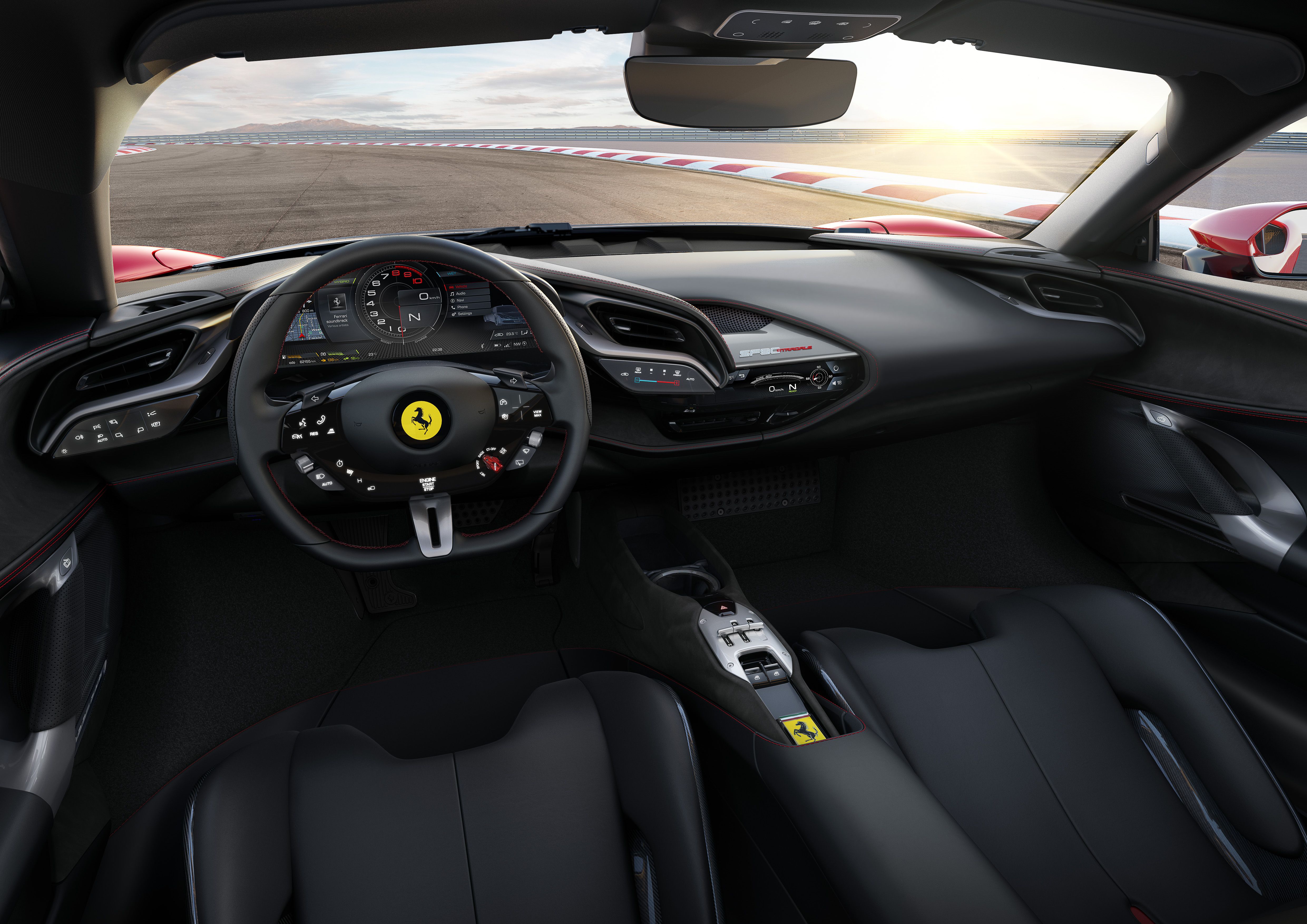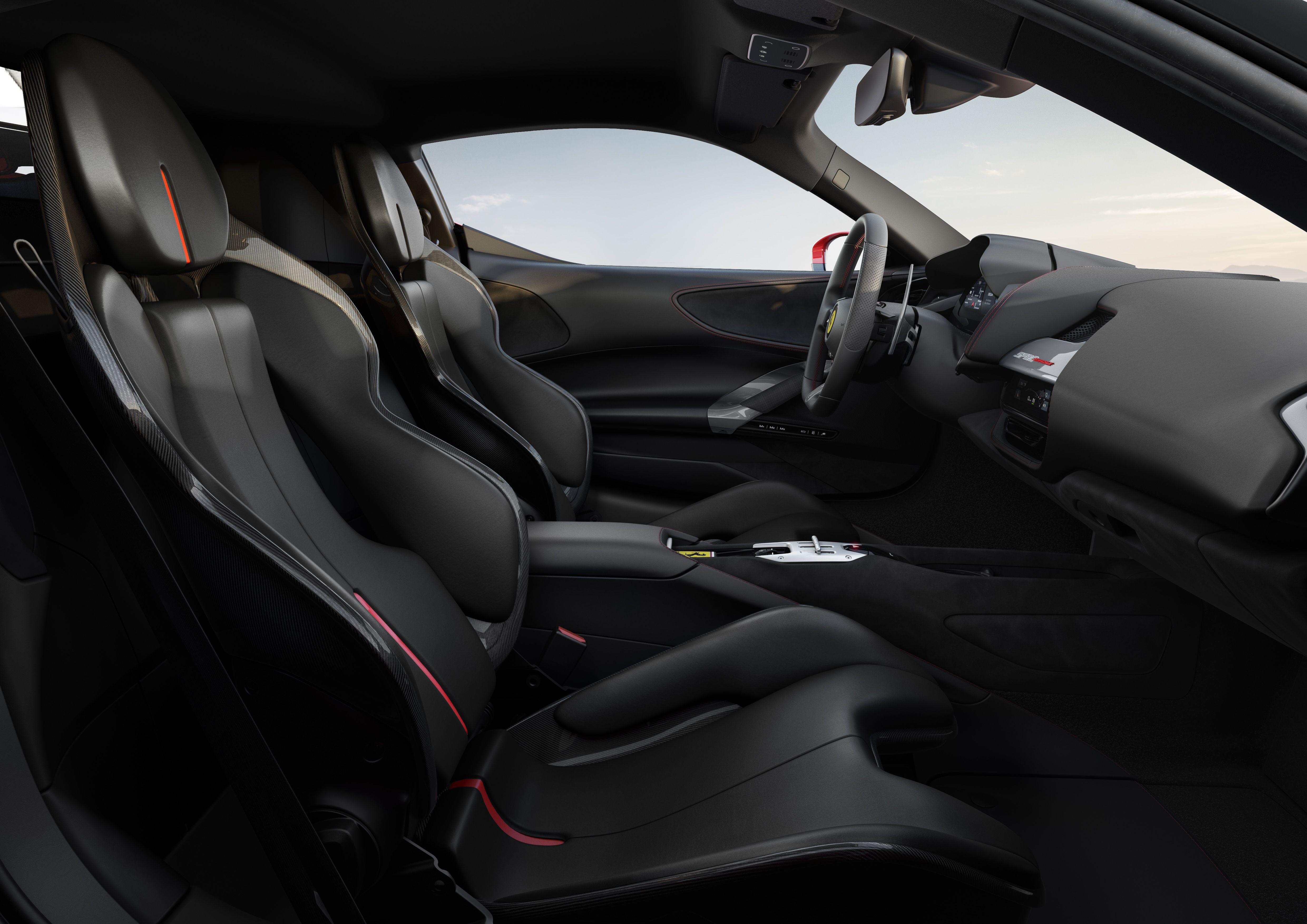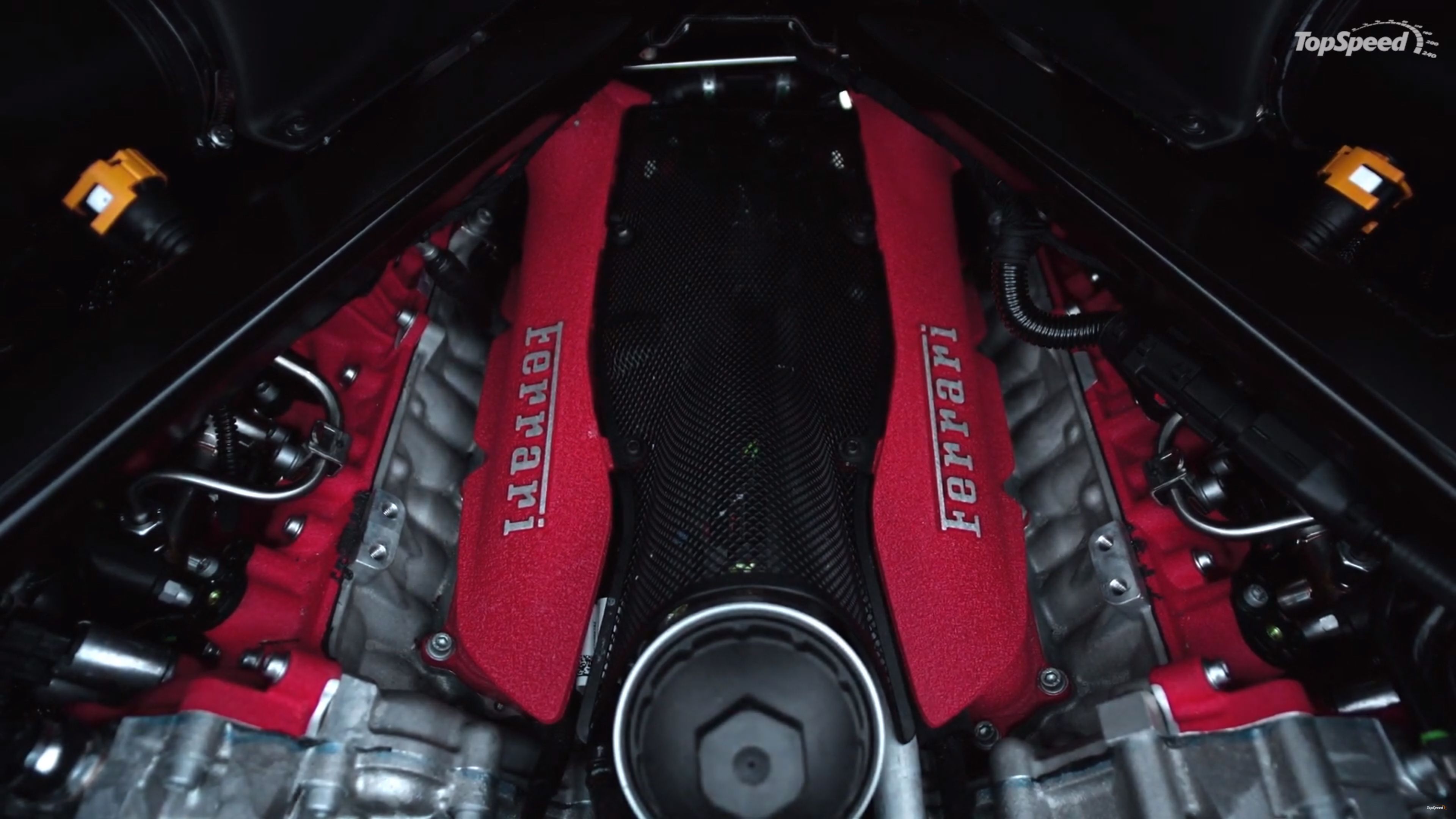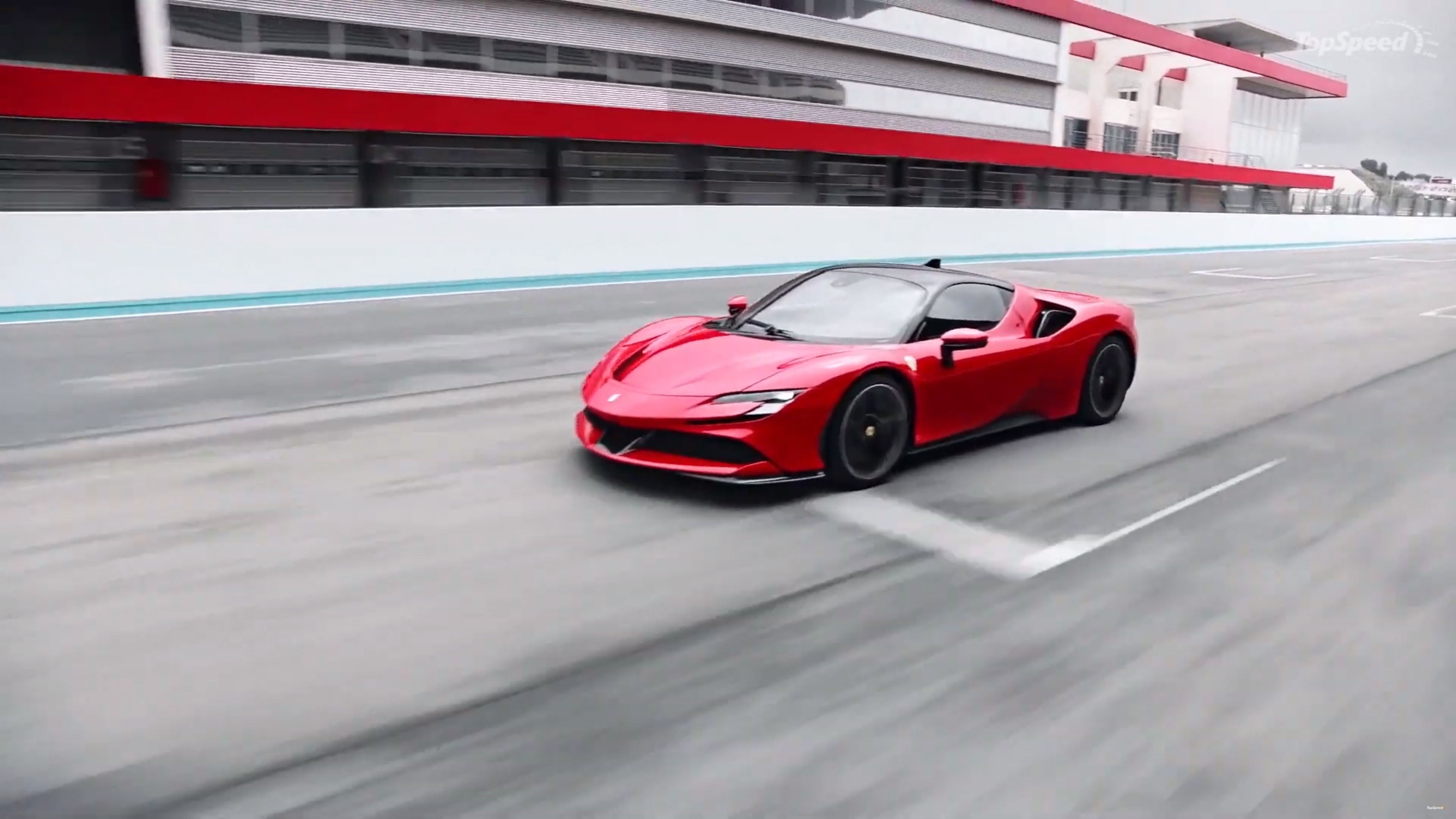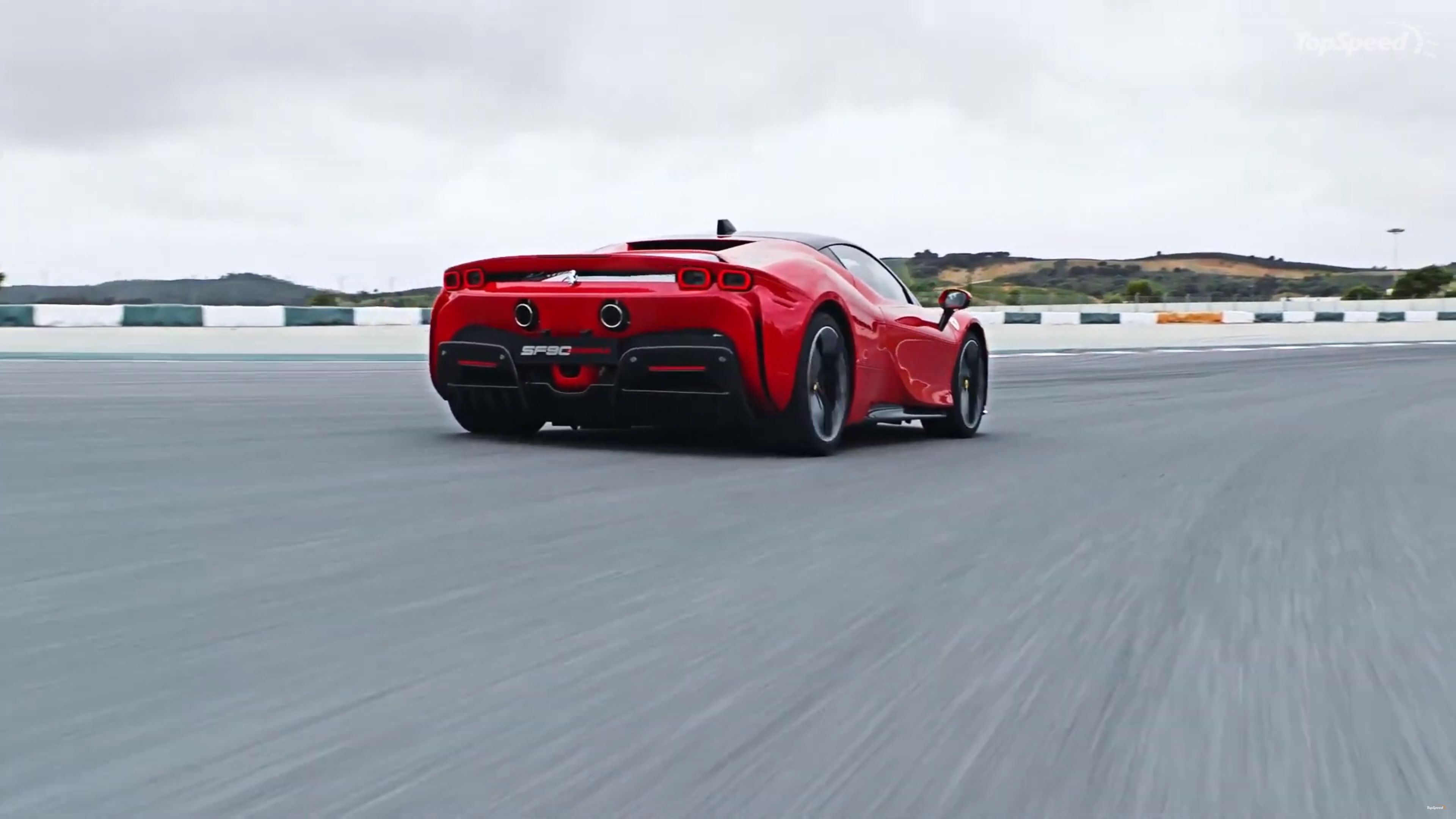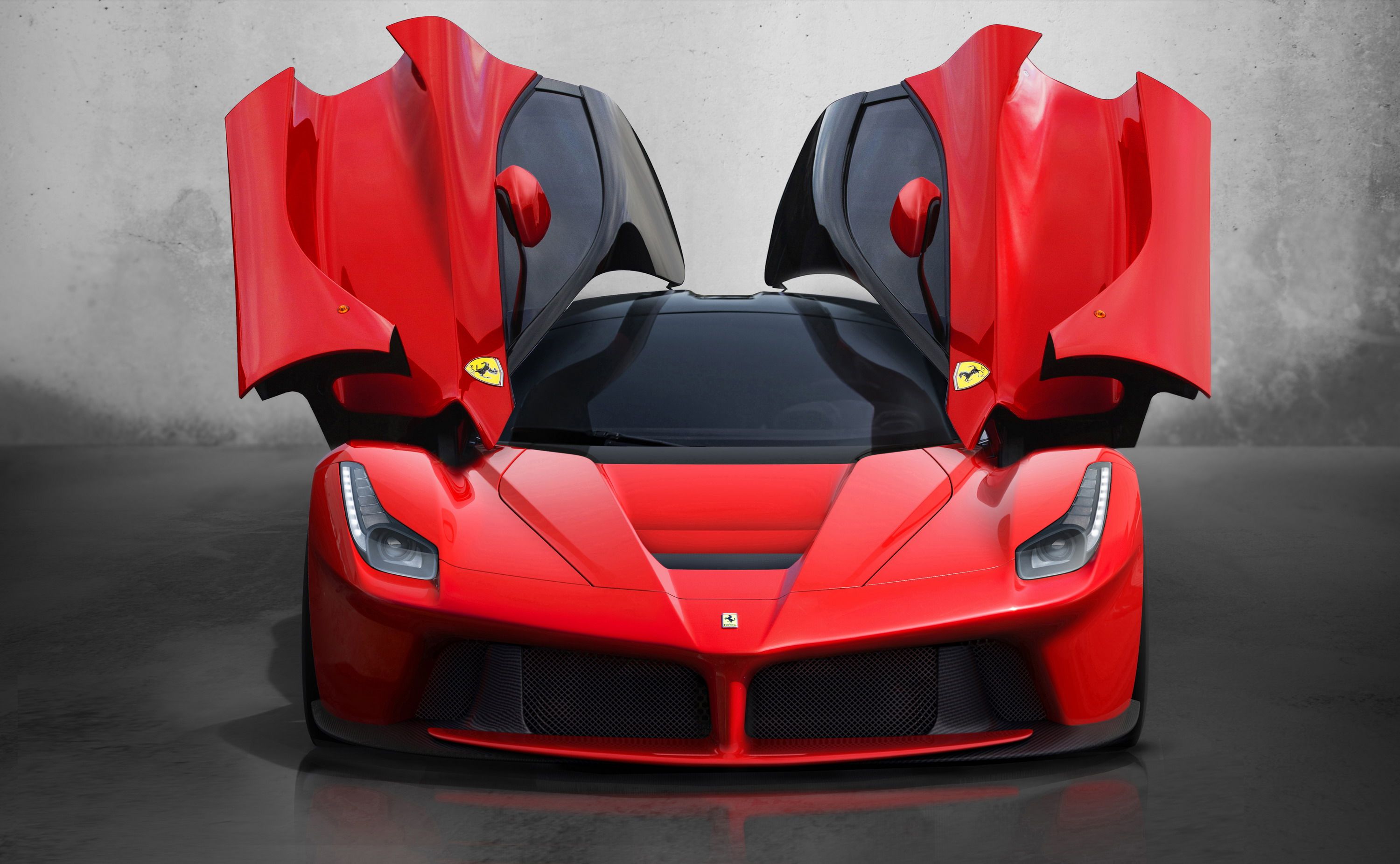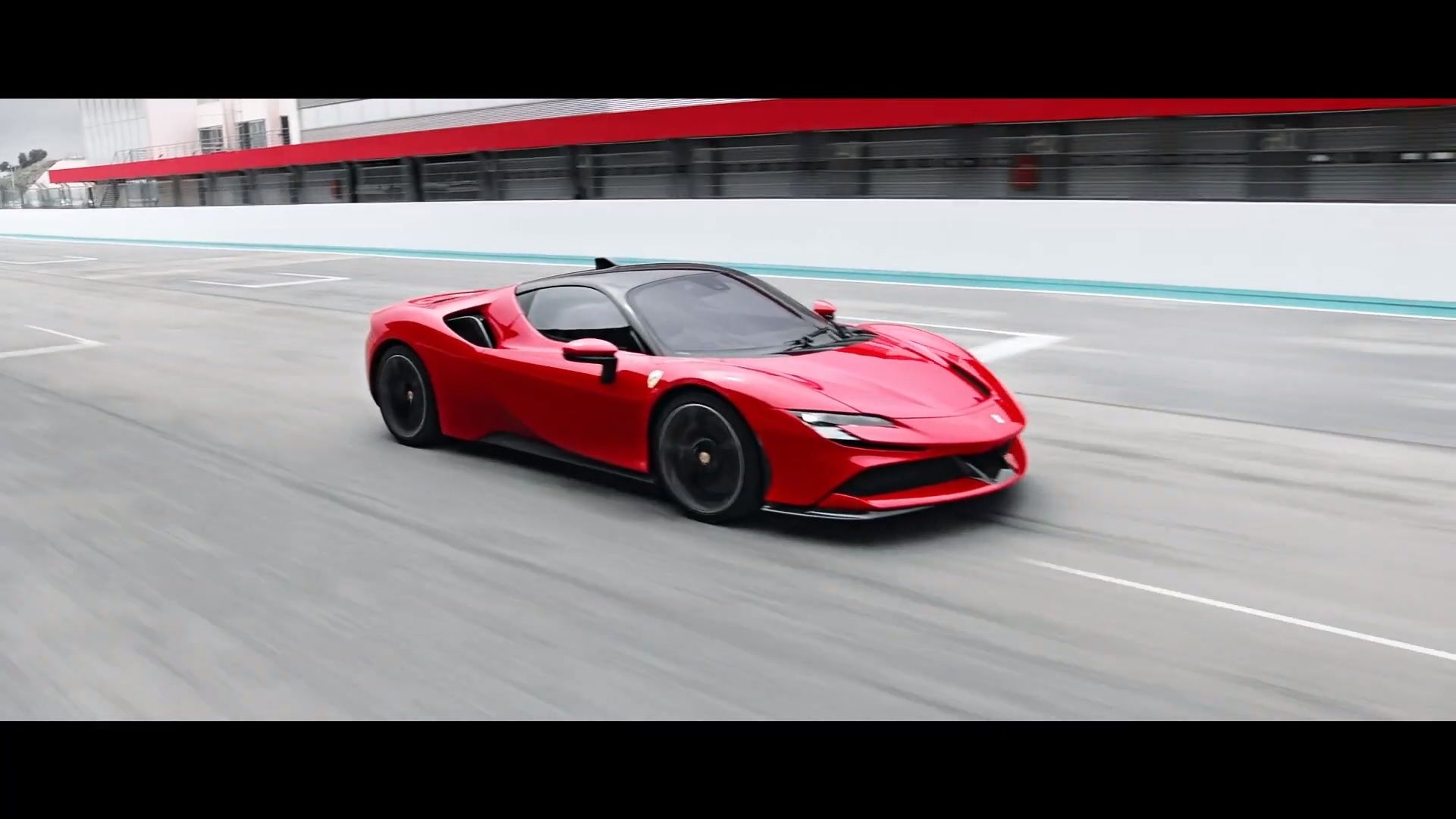Ferrari just unleashed its latest range-topping hypercar, the SF90 Stradale. A spiritual successor to the LaFerrari based on its hybrid drivetrain. Surprisingly enough, the SF90 Stradale comes less than a year after production of the LaFerrari ended in August 2018. By contrast, the LaFerrari came into the spotlight a whopping nine years after its predecessor, the Enzo, went into the history book. The Enzo itself arrived five years after the F50. That's probably because today's fast-paced industry no longer allows Ferrari to take such long breaks between hypercars. With the SF90 unveiled and official, we're obviously wondering how it compares to the LaFerrari. Let's find out below.
Is the Ferrari SF90 Stradale more extreme design-wise?
Not really.
A quick comparison between the two is enough to notice that the SF90 Stradale is a notable departure from the LaFerrari. At the same time, the new hypercar looks a bit more... human. While both the Enzo and the LaFerrari showcase Formula One-inspired cues with pointy noses and aggressive angular lines, the SF90 Stradale is a more organic, road-friendly design. And unlike its predecessor, it shares some styling cues with existing models like the F8 Tributo and the 812 Superfast.
Stand in front of this supercar, and you'll notice it looks a bit bland compared to the LaFerrari. The nose isn't as aggressive, while the bumper has a less intricate design. Sure, the black elements that split the huge vent at the center is obviously borrowed from Formula One, but other than that, the SF90 Stradale doesn't look as if aliens build it. The headlamps are also a brand-new design cue for Ferrari, mostly because of their C-shaped design and the way they embrace the main horizontal line that defines the nose. The triple LED bar that connects the nose element to the fenders are a nice touch as well.
|
|
ids=842398,842399 |
no_overlay=false |
before_label=Ferrari SF90 Stradale |
after_label=Ferrari LaFerrari> |
The front hood is rather clean compared to the LaFerrari. It misses the multi-tiered central vent of the latter, as well as the V-shaped center section, yet another feature taken from Formula One. This hood could very well adorn any other Ferrari available right now.
The SF90 Stradale's profile design was simplified as well. The LaFerrari's extremely carved door design was dropped. This feature made the side skirt, and the upper door looks more aggressive and made the rear fender air inlet standard out. It also made the rear fenders seem more muscular. All these features gave the LaFerrari's profile a unique look among the Ferrari lineup. The Italians cleaned all that up for the SF90. Apart from the deep carving on the lower rear section of the door and the swooping beltline that ascends aggressively toward the rear wheel arch, the Stradale boasts a clean and simple design.
|
|
ids=842400,842401 |
no_overlay=false |
before_label=Ferrari SF90 Stradale |
after_label=Ferrari LaFerrari> |
Ferrari also chose to move the air inlet on the upper section of the fender, a feature we've seen on other Ferraris, like the F8 Tributo. Fortunately, this vent sits higher than usual, so the SF90 Tributo still stands out as a unique design overall.
|
|
ids=842402,842403 |
no_overlay=false |
before_label=Ferrari SF90 Stradale |
after_label=Ferrari F8 Tributo> |
The cabin design is far from special when looking from the sides, but it becomes more interesting when viewed from the top. The black roof makes it seem like the SF90 has a jet fighter-type canopy. The engine hood also ditched the traditional big screen that stretched from the cabin toward the rear deck. Instead, Ferrari went with a much smaller window that occupies only half of the hood's length and width. There's a smaller window just below the roof for rearward visibility, a feature we've seen on the Ferraris from the 1980s, most notably the Testarossa.
The fuel caps were moved closer toward the engine hood, while the movable spoiler stands flush into the deck lid. This is a massive departure from both the Enzo and the LaFerrari, which feature V-shaped hood windows and deep vents on each side.
The rear fascia is new yet familiar. Ferrari returned to the quad-taillights configuration with the SF90 but opted for almost rectangular lights instead of the traditional round elements. It also ditched the shallow center fascia seen on the LaFerrari for a closed off panel with a traditional black element in the center. Another big change is the relocation of the exhaust pipes from the lower corners of the bumper to the center fascia. The quad-pipe layout was replaced by a dual-pipe configuration. This change enabled Ferrari to build a much wider diffuser that now extends to the extreme corners of the rear fascia. This translates into better aerodynamics and better performance on the race track.
Interestingly enough, both the front and rear fascias seem to have been inspired by the one-off SP38 Deborah based on the Ferrari 488. See for yourself below.
|
|
ids=842404,842405 |
no_overlay=false |
before_label=Ferrari SF90 Stradale |
after_label=Ferrari SP38> |
All told, the SF90 Stradale boasts an appealing exterior design, but it doesn't feel as extreme as the LaFerrari. The latter looked like a rebodied Formula One car for street use, while the SF90 Stradale looks more like a beefed-up version of the 488 Pista. I'm not saying this is a bad thing. I actually like the simpler design of the SF90, but I'm surprised that Ferrari didn't take the extreme design route as it did in the past. Just look at our rendering of the hypercar to under what I mean. This is what we expected to see.
The Ferrari SF90 Stradale' interior is equally mild
When the LaFerrari arrived, it blew us away with its race-inspired interior. The flat-top and flat-bottom steering wheel, the aircraft-inspired A/C vents, the controls on the center console, and the massive amount of carbon-fiber all reminded us of Le Mans racing prototypes. It still had a certain degree of luxury via soft leather and amazing craftsmanship, but it had "race car" written all over it.
The SF90 Stradale isn't as extreme. The steering wheel doesn't have a flat top like Le Mans prototype race cars do, while the round A/C vents were replaced with a more intricate, yet road car-specific design. The door panels also look friendlier than the LaFerrari's. The seats are just as aggressive though, but this isn't surprising as SF90 drivers will need all the support they can get given the extreme power of this vehicle.
The SF90 Stradale also has more advanced technology than the LaFerrari. The instrument cluster is a 16-inch screen with a curved surface, an industry-first feature. The steering wheel is also a lot more modern as it features touch-sensitive controls that enable you to operate all important features.
The new HMII interface on the center stack also has revised controls. Ferrari redesigned the F1 driving controls on the center console too and added a metal plate that references the open gear lever gate seen in iconic Ferraris from the past. Ferrari clearly aimed for a classy look here.
The Ferrari SF90 Stradale is a full-fledged hybrid
While both the LaFerrari and SF90 Stradale are hybrids, these cars are actually significantly different under the shell. That's because the LaFerrari is a mild hybrid that marries a gasoline engine to a KERS energy recovery system, while the SF90 Stradale is a full-blown hybrid that pairs a traditional engine to electric motors.
The LaFerrari's drivetrain design was heavily based on Ferrari's mild-hybrid Formula One system. But Maranello ditched the small-displacement engine from its F1 car in favor of a 6.3-liter V-12. The KERS system was pretty much the same, with mild alteration made so it can work well with the big V-12.
The latter delivers an impressive 789 horsepower and 516 pound-feet of torque. By itself, this V-12 is enough to make the LaFerrari run fast and set new records. But the KERS system adds some extra oomph in the form of 161 horsepower and 148 pound-feet of twist in short bursts. This means that the LaFerrari benefits from a whopping 950 horsepower and 664 pound-feet of torque with both systems engaged. Now that's a tough-to-beat figure! But this is where the SF90 Stradale comes in with a bang.
Although it uses a smaller, 4.0-liter V-8 engine, the SF90 Stradale cranks out 769 horsepower and 590 pound-feet when using gas power only. Sure, the SF90 falls behind the LaFerrari by 20 horses, but it benefits from an extra 74 pound-feet thanks to its turbocharged engine. This output also makes the SF90 Stradale the most powerful V-8 Ferrari yet!
But what about electric power? Well, unlike the LaFerrari, the SF90 Stradale doesn't have a KERS system. Instead, it features a lithium-ion battery pack and no fewer than three electric motors. Two spins the front axle for all-wheel-drive power, while the third unit is located in the rear. All three motors generate 217 horsepower and increase the car's grand total to 986 horses. That's 36 horsepower more than the LaFerrari and a record-breaking output for the Italian automaker. No word on electric torque yet, but these motors should deliver well in excess of 300 pound-feet, so look for a total twist of at least 900 pound-feet (vs. the LaFerrari's milder 664-pound-foot rating).
An eight-speed dual-clutch transmission sends all that oomph to all four wheels, an upgrade from the LaFerrari's seven-speed gearbox. AWD capability is also a plus compared to the LaFerrari, but the SF90 Stradale isn't the first AWD car from Maranello. This title goes to the Ferrari FF and its renamed facelift, the GTC4Lusso.
It's natural to assume that the more powerful SF90 is also quicker than the LaFerrari. But it's not. Its official 0-to-60 mph rating says 2.5 seconds, which is similar to the LaFerrari. Its top speed is actually lower at 211 mph, a six-mph decrease from the LaFerrari. On the other hand, the SF90 Stradale is quicker on Ferrari's Fiorano test track. The new supercar lapped the course in 1:90 minutes or seven-tenths of a second quicker than the LaFerrari. So while it might not be quicker in a straight line, the SF90 Stradale is the better car on the race track.
Because it has a proper battery and three electric motors, the SF90 Stradale also has more all-electric range. While the LaFerrari was able to drive for eight miles on EV power alone, the SF90 Stradale can do the same for 16 miles. Granted, it's not much compared to other hybrids on the market, but it's a notable increase.
The Ferrari SF90 Stradale isn't a true successor to the LaFerrari
Ferrari's much anticipated hybrid supercar was believed to replace the LaFerrari at the top of the company's lineup. But it doesn't. This hypercar will indeed sit above the 812 Superfast in the lineup, but it won't the same role as the LaFerrari. A proper successor to the LaFerrari will arrive in 2022, likely with more power. All told, this isn't a comparison between the LaFerrari and its successor, but a comparison between Ferrari's only hybrid vehicles up until now.
Further reading
Read our full review on the 2014 Ferrari LaFerrari
Read our full review on the 2021 Ferrari SF90 Stradale.
Read our full speculative review on the 2021 Ferrari LaFerrari Successor.

